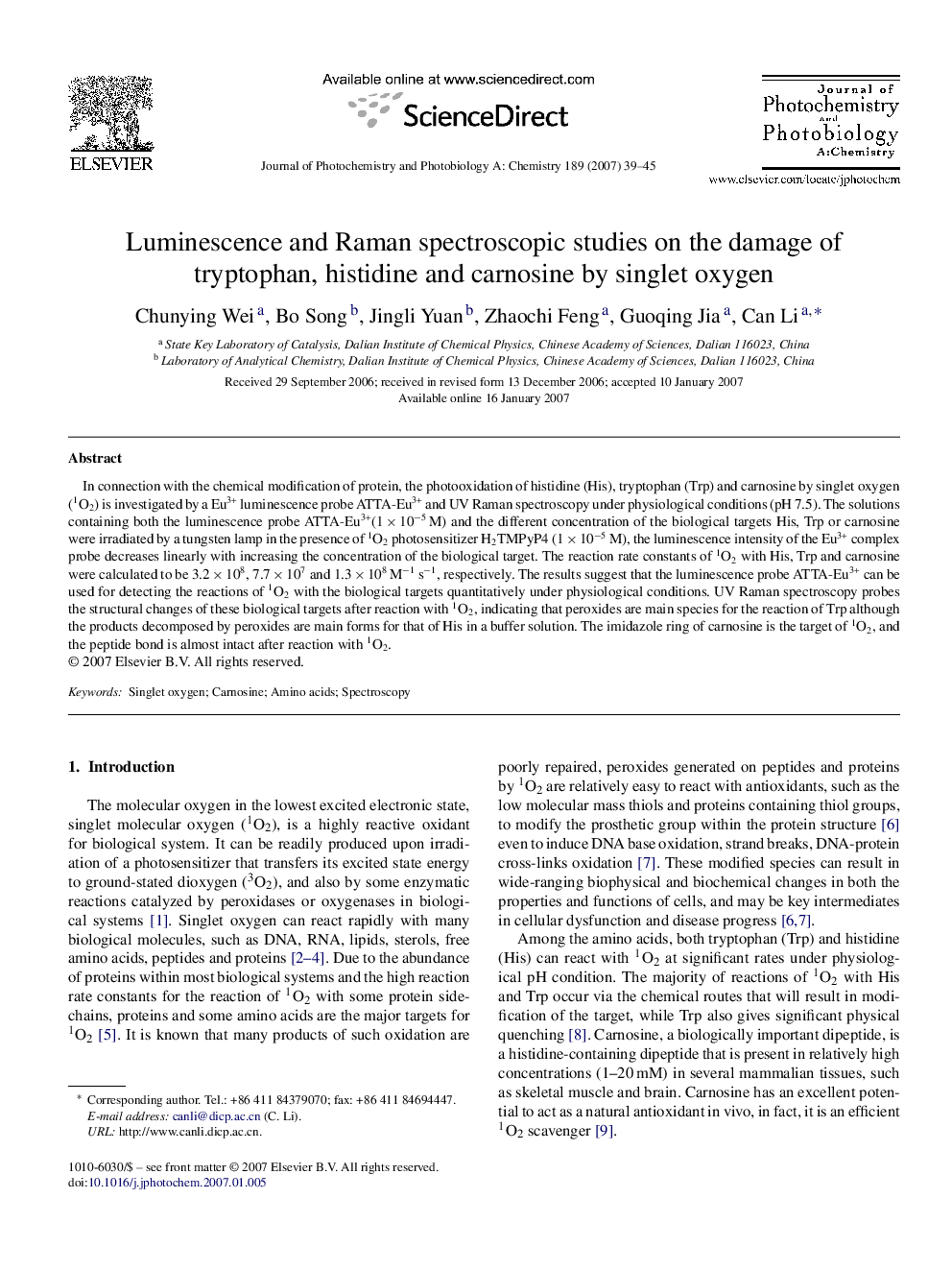| Article ID | Journal | Published Year | Pages | File Type |
|---|---|---|---|---|
| 29303 | Journal of Photochemistry and Photobiology A: Chemistry | 2007 | 7 Pages |
In connection with the chemical modification of protein, the photooxidation of histidine (His), tryptophan (Trp) and carnosine by singlet oxygen (1O2) is investigated by a Eu3+ luminescence probe ATTA-Eu3+ and UV Raman spectroscopy under physiological conditions (pH 7.5). The solutions containing both the luminescence probe ATTA-Eu3+(1 × 10−5 M) and the different concentration of the biological targets His, Trp or carnosine were irradiated by a tungsten lamp in the presence of 1O2 photosensitizer H2TMPyP4 (1 × 10−5 M), the luminescence intensity of the Eu3+ complex probe decreases linearly with increasing the concentration of the biological target. The reaction rate constants of 1O2 with His, Trp and carnosine were calculated to be 3.2 × 108, 7.7 × 107 and 1.3 × 108 M−1 s−1, respectively. The results suggest that the luminescence probe ATTA-Eu3+ can be used for detecting the reactions of 1O2 with the biological targets quantitatively under physiological conditions. UV Raman spectroscopy probes the structural changes of these biological targets after reaction with 1O2, indicating that peroxides are main species for the reaction of Trp although the products decomposed by peroxides are main forms for that of His in a buffer solution. The imidazole ring of carnosine is the target of 1O2, and the peptide bond is almost intact after reaction with 1O2.
